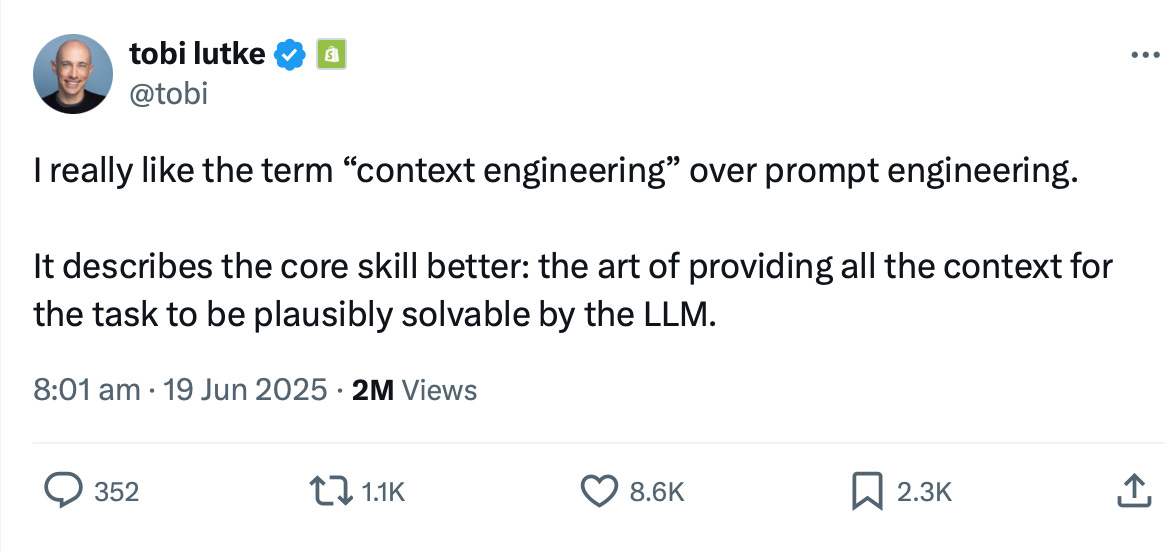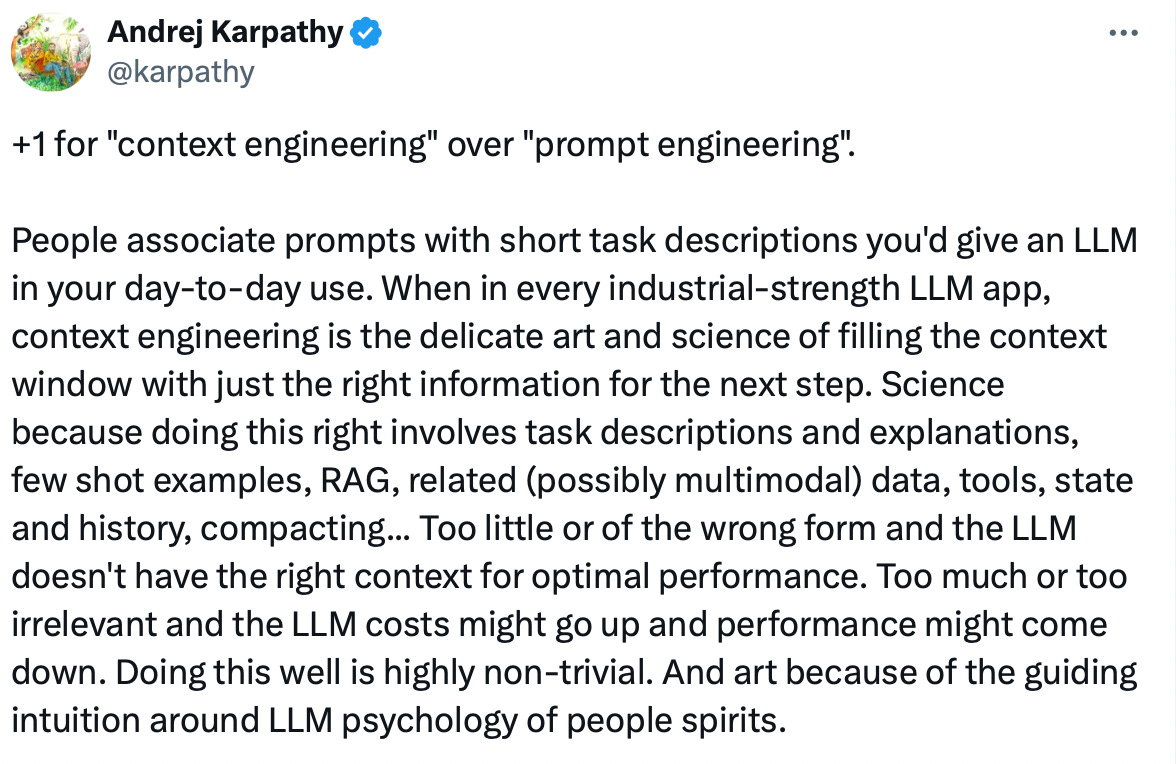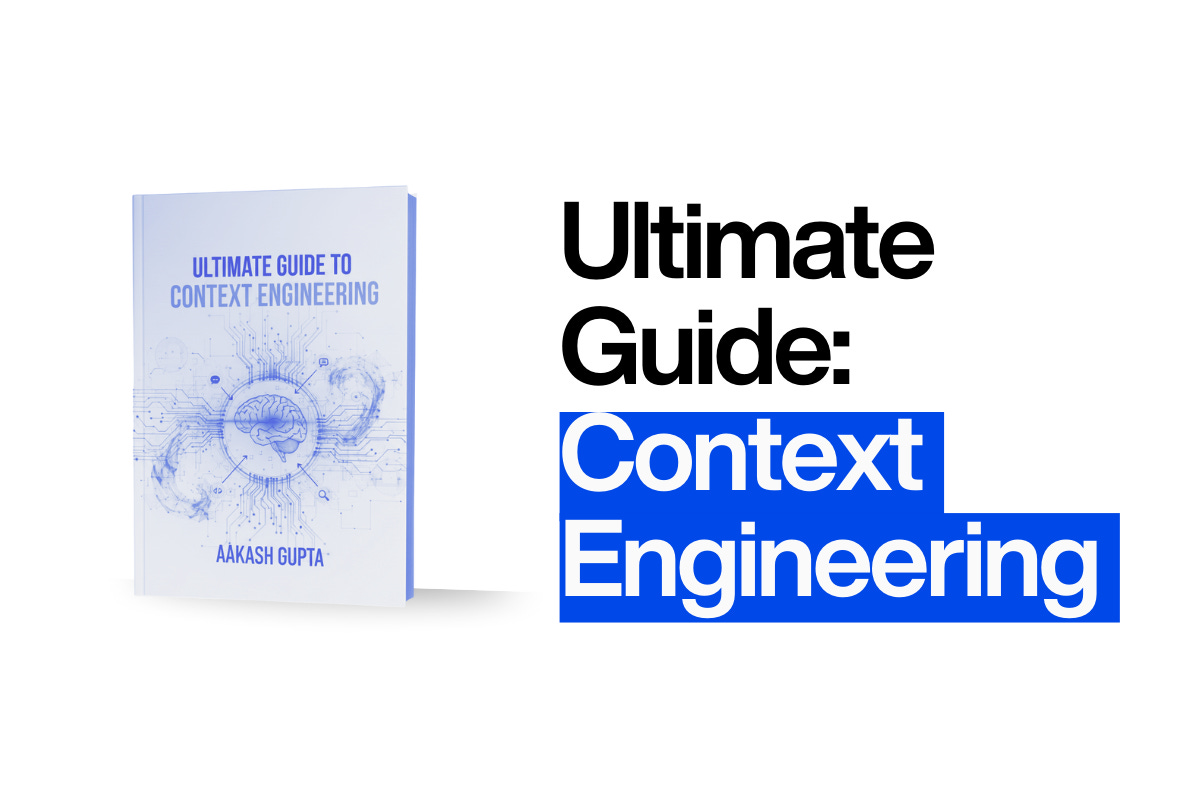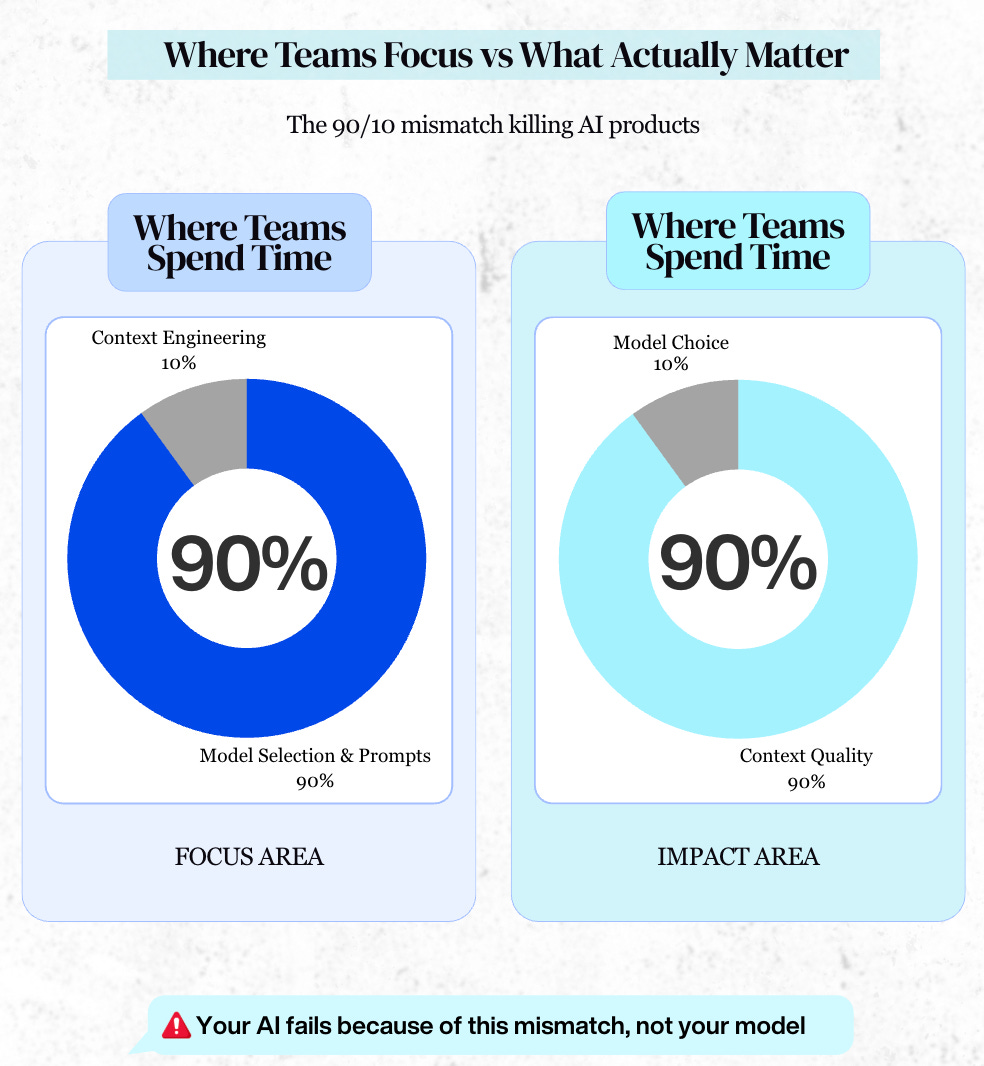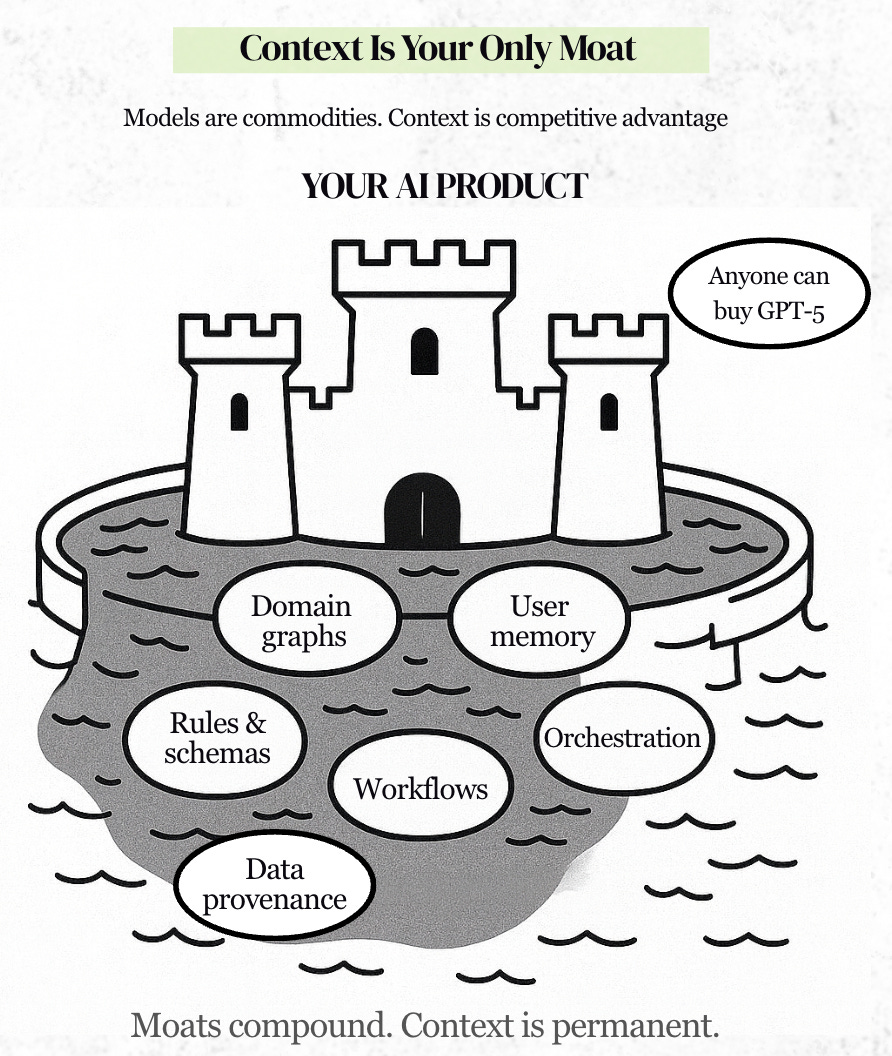The Ultimate Guide to Context Engineering for PMs
All the frameworks, prompts, and checklists you need to master context engineering - from an OpenAI Product Leader
AI product building is a rich man and a poor man’s game.
On the rich man’s side…
The chips have never been more powerful, the models have never been more capable, and the barrier to building AI features has never been lower.
On the poor man’s side…
Most AI features shipped today still behave like interns. Let’s be honest. They’re good in certain use cases. But they need hand holding. And they’re inconsistent.
Why?
The answer is rarely “model quality.” It is almost always context quality.
That’s why “context engineering” sounds like an engineering topic, but it is one of the most important disciplines for AI PMs.
World-Class AI leaders Agree
Here’s Tobi Lutke, CEO of Shopify:
And Andrej Karpathy, OpenAI Co-Founder and former head of Tesla Autopilot:
They both are echoing the importance of this skill. So I expected to find lots of great content out there.
Surprisingly, all the other content I found was geared to AI engineers, not AI PMs.
So I wanted to create the ultimate guide for PMs.
Introducing Miqdad Jaffer
To make sure I deliver, I’ve partnered with a true leader in AI - Miqdad Jaffer, a Product Leader at OpenAI.
Miqdad teaches an awesome 6-week cohort course, the AI PM Certification. Get $550 off his course using my code AAKASH550C7. The next cohort starts January 26th.
Today’s Post
In my last podcast episode, I showed you that context engineering can take you to $10M ARR in 60 days. In today’s episode, Miqdad and I break down how to do it yourself:
Why Does Context Engineering Matter?
The PM’s Role in Context Engineering
The 6 Layers of Context to Include
Common Mistakes
How to Engineer Context Step-by-Step
How to Spec out Features Appropriately
Checklists, templates + prompts you can steal
1. What is Context Engineering, and Why Does it Matter?
Defining Context Engineering
We like Andrej’s definition from above. Context engineering is:
The delicate art and science of filling the context window with just the right information for the next step.
If prompt engineering is the instruction sheet, context engineering is the entire world the model sees.
As Ilya Sutskever (another OpenAI founder) highlighted in the recent Dwarkesh podcast, the big difference between humans and LLMs is LLMs do not infer context magically. They do not automatically know:
who the user is
what the user did 5 seconds ago
which document is relevant
what the system knows about the user
what rules the business must follow
what data is allowed to be used
what happened in previous sessions
whether the user is a beginner or an expert
which constraints must be met
which entities exist in the user’s workspace
how everything relates to everything else
That’s what we’re going to put in with context engineering.
Why Context Engineering Matters
Everyone wants to talk about model selection and prompts.
You can switch from GPT-5.1 to Gemini 3. But, if the system:
doesn’t know what file the user is working on
doesn’t see the user’s preferences,
isn’t aware of the entities or relationships in the workspace,
cannot recognize the user’s role,
retrieves irrelevant documents,
or misses crucial logs…
Then you’re SOL (shit outta luck).
Here’s 2 real life examples:
Example 1: AI Email Assistants
When we were building Apollo’s email writer, Aakash learned that when the model sees:
We only gave it the last message → output was generic
We gave it the entire thread → output became coherent
We gave it the thread + CRM notes → output became personalized
We gave it thread + CRM + company tone-of-voice → output became brand aligned
We gave it thread + CRM + tone + relationship context → the output became shippable
It encoded the importance of context engineering in my mind.
Example 2: AI Coding Assistants
Let’s take another example. Do a thought exercise: How has Cursor managed to not get replaced with Anthropic and hit $1B ARR?
— WAIT FOR IT —
— DON’T READ AHEAD TILL YOU THINK ABOUT IT —
Our answer?
When you open a project in Cursor, it indexes your codebase by computing embeddings for each file, splitting code into semantically meaningful chunks based on the AST structure.
When you ask a question, it converts your query into embeddings, searches a vector database, retrieves the relevant file paths and line numbers, then adds that content to the LLM context.
This is why Cursor lets you choose between models from OpenAI, Anthropic, Gemini, and xAI. The model is almost modular. The context layer is the moat.
Google tried to buy Cursor instead of compete. When that failed, they spent $2.4B on Windsurf, the #2 player.
That’s a signal that context engineering creates defensibility that model capability alone cannot replicate.
So now that you understand why context engineering is your moat, we’re going to give you every tactical tool to do it well: frameworks and canvases to use as a PM + real life checklists, templates & prompts you can steal. It’s easily the deepest guide for AI PMs on the web.
2. The PM’s Role in Context Engineering
Most teams assume context engineering is an engineering problem.
It is not.
Keep reading with a 7-day free trial
Subscribe to Product Growth to keep reading this post and get 7 days of free access to the full post archives.

